In the first 12 years of life, approximately 80% of all learning comes through the visual system.
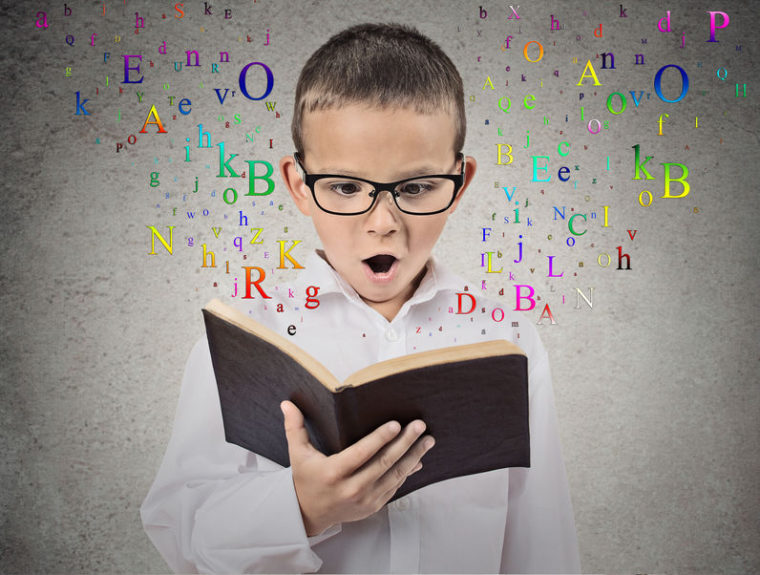

What it takes some people 80 years to accomplish, Kobe Bryant achieved in forty-one. He exemplified the power of intention and focused attention.
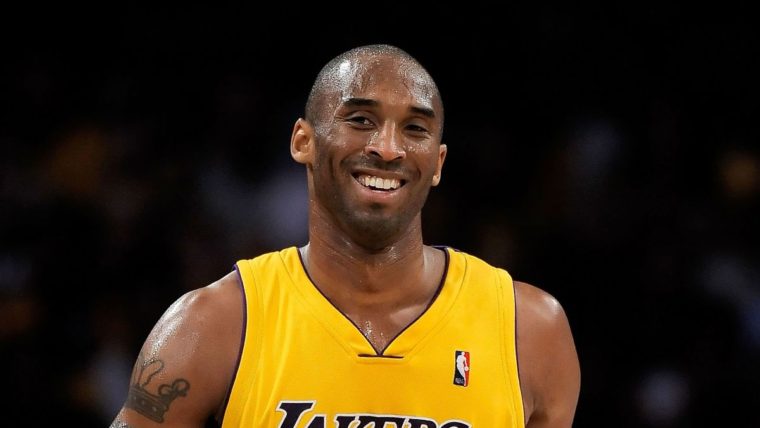
“I didn’t feel good about myself if I wasn’t doing everything I could to be the best version of myself.” ~ Koby Bryant
He started playing basketball at three years. When he was six, his father retired from the NBA and moved their family to Italy to be able to continue playing at a lower level. While there, Koby began to play basketball on a serious level and his grandfather kept him supplied with videos of NBA games for him to study.
At the age of 13, his parents returned to the United States for good. Koby recalls his days of being an insecure little boy, with no friends. On top of that, he said,
“I couldn’t spell, so the teacher told my mother that I was probably dyslexic, it was like somebody took me and dropped me in a bucket … in a tub of ice-cold water, because it shocked me.”
His mother made sure he got the help he needed.
It was then that he decided to channel his anger from the challenges and frustrations of dyslexia into sports and went on to become one of the NBA’s all-time exceptional players.
He made a deal with himself to stay focused on his goal and not be distracted by anything. He resolved to work hard every day, so that he could retire with no regrets, when that time came.
Kobe had an excellent work ethic and pushed himself to live the best way he knew how. Because he was super-focused on his craft, the world became his library. He looked at everything with this question in his mind, “How can this help me to become a better basketballer?”
He believed in playing with structure… with discipline. He believed in self-competition… always asking himself, “Is this the best I can do?”
Another concept he held was that you can learn more from your failures than your successes. He said that, “True strength comes from your vulnerability.”
He would review previous games with one of his coaches, then while playing, he was able to slow the game down in his mind and position players for optimal results. (a dyslexic strength) When a weakness emerges, the answer is there if you look at it.
With all his successes, he took time to be kind to those who would never be able to reciprocate. Did you know that he made over 200 Make A Wish kids’ dreams come true?
Here are 10 of his rules for success, gleaned from his various speeches:
He had an insatiable desire to learn more.
Listen to his final motivational speech here.
Which rule would you choose to motivate a struggling child in your life?
Most dyslexic children do not want to get out of bed on a school day. The younger ones may still be tired after a long night completing home work. In addition to that, the older ones have social issues – being called dumb or lazy, being stared at or whispered about behind their backs.

Follow Henry through one day at school.
Has your child ever pretended to be sick to avoid going to school?
What did you do?
The most common struggle dyslexics experience is an inability to read. They have extreme difficulty identifying letters, converting those letters into sounds and putting them together to make words.

During the times of the apprenticeship era, there was not the great need to read as there is today. People learned by observing and doing. Kinesthetic learning was the norm.
With the dawn of the industrial revolution, however, there arose the need to educate the masses to work in the resulting businesses.
The invention of the printing press merged perfectly with this need for mass education. This made it possible to put knowledge into a system that could be spread out on a national level. Hence, the proliferation of textbooks. Only then did those with dyslexic minds begin to have problems.
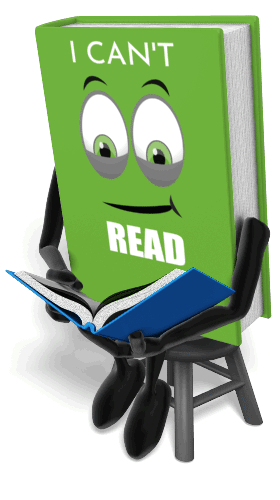
According to Dean Bragonier, founder and executive dyslexic of NoticeAbility, the dyslexic mind is able to “look at a situation, identify seemingly disparate pieces of information and blend those into a narrative or tapestry that makes sense” to them. Most people are unable to perceive the situation in the same way.
This ability translates into levels of exceptional success needed in some vocational paths, for example, entrepreneurship, engineering, architecture and the arts.
In spite of that, they are at a great disadvantage during their years in school.
There are three ways of accessing information: eye reading (print books), ear reading (recorded or audiobooks), and finger reading (braille). While information is commonly made available in braille for blind children, dyslexic children are mandated to eye read print books, and when they have trouble doing so, are labeled as lazy, stupid or unmotivated to learn.
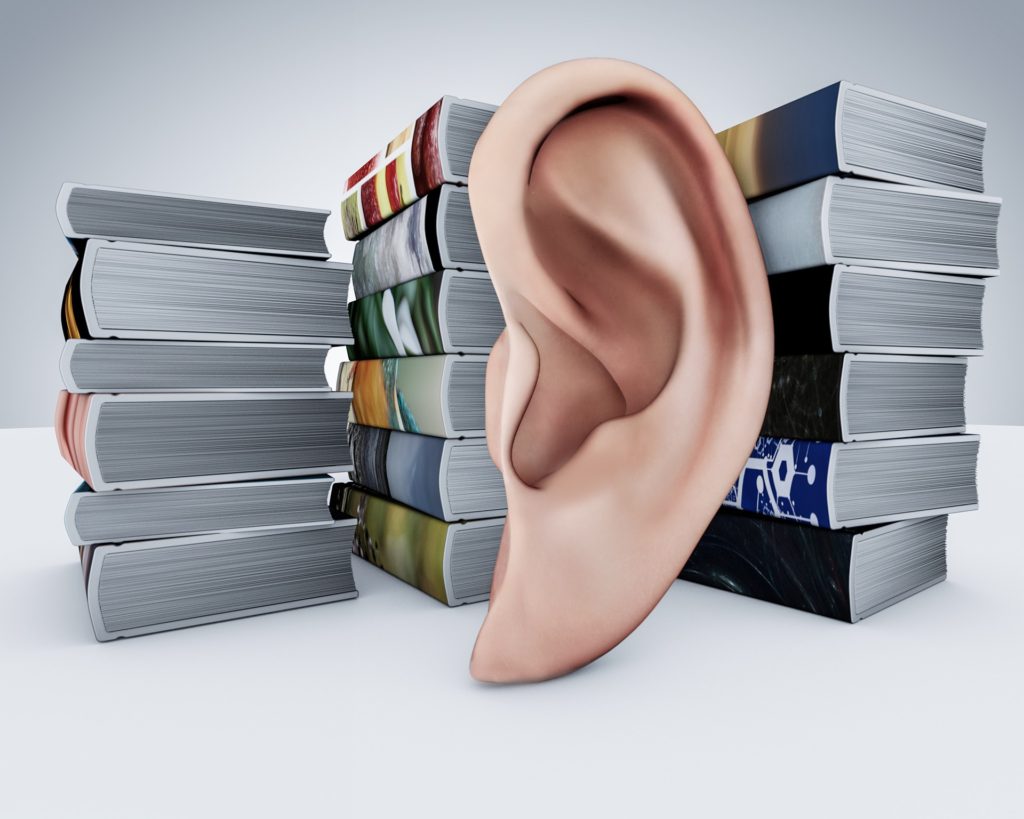
Ear reading is not new. As early as 1931, the American Foundation for the Blind and the Library of Congress Book for the Blind Project established the Talking Book Program. Here is an abridged history of audiobooks:
1934: The first recordings are made for the Talking Book Program and include parts of The Bible, The Declaration of Independence, and Shakespeare’s plays.
1948: The Recording for the Blind program is founded (in 1995 renamed Recording for the Blind and Dyslexic, and in 2011 renamed Learning Ally).
1952: Caedmon Records is formed in New York and is a pioneer in the audiobook industry.
1955: Listening Library is founded and is the first to distribute audiobooks to libraries and schools.
1970s: Libraries start carrying audiobooks.
1985: Publishers Weekly identifies 21 audiobook publishers including Caedmon, Recorded Books, Books on Tape, Harper and Row, and Random House.
1980s: Bookstores start to display audiobooks on bookshelves instead of in separate displays.
1986: The Audio Publishers Association is created.
1997: Audible debuts the first digital audio player.
2011: Audiobook self-publishing becomes possible with the Audiobook Creation Exchange (ACX).
2012: Audiobook annual publication increases 125% from 7,200 to 16,309.
(Source: The Audio Publishers Association)
Dyslexic clinical psychologist, Dr Michael Ryan, gives some recommendations when using audiobooks:

With this longstanding history, I wonder why aren’t schools more accepting of ear reading as a method for testing the knowledge of those children who are dyslexic, and audiobooks for textbooks?
What has been your experience with audiobooks?
Have you used recorded textbooks for your children?
In 1967, Johnson and Myklebust stated that “a child who cannot read cannot write.” That makes sense, since some researchers, in their 2010 and 2011 studies, found that “reading and writing rely of related underlying processes.”

Just as they do with reading, most children with dyslexia have trouble with writing. This is demonstrated in a number of ways, for example, poor spelling, illegible penmanship, narrow vocabulary, weak idea development, and a lack of organization of thoughts.
You may hear a dyslexic child say, “I know what I want to say, but I just can’t write it down.”
Marianne Mullally, an Australian educator, explains it simply:
Just like their reading can be improved with time and various strategies, the writing of dyslexics can get better with explicit instructional strategies.
Keep in mind that reading must be worked on first. Michael Clark gives parents some tips and tricks to help their dyslexic children with their writing skills:
Now, here’s a fun activity. If you are non-dyslexic, do this exercise to experience what it is like for a dyslexic to take notes:
How did you do? Please share your thoughts with us.
Parents usually assume that their children are seeing normally. That’s not always the case.

According to the American Optometric Association, up to 80% of a child’s learning in school is through vision! This makes you child’s visual health extremely important.
Did you know that 1 in 10 children has a vision problem that’s significant enough to impact their learning? In the United States, that translates to over 5 million children.
Three vision skills necessary for optimal learning are:
Visual Acuity
When you take your child to the pediatrician, he gets a typical vision screening. Have you ever wondered if those screenings are foolproof? The National Center for Biotechnology Information says that at least 50% of vision problems are missed by typical screenings.
In addition to that, being assured that your child has 20/20 vision only tells you he can see at a distance. It does not dismiss the possibility of visual focusing, coordinating or tracking problems – all related to learning.
Convergence
Both eyes must work together, effortlessly and without hurting. That’s convergence. When they don’t quite work together, most likely, the child will sees words on a page bounce around. The child may then tell you that the words are blurry or swimming.
Most children under seven years will assume that everyone sees like they do and say nothing.
When this eye-jumping happens in a classroom, the child may complain of feeling tired, headaches (across the forehead, above the eye brows), and/or aching eyes. Some children tilt over to one side to read, thus creating a way to read with only one eye. For these children, reading is linked with distress and comprehension of what is read is low.
Convergence problems can also cause writing problems, because of poor hand-eye coordination.
Visuospatial Attention
Skilled readers are able to focus on individual words within a cluttered page of text, and after a word has been identified, they must rapidly shift their gaze to fixate on the next word in the line. These changes in visuospatial attention must occur rapidly and accurately to enable fluent reading of a page of text.
When the eyes do not move smoothly along together, the child skips words and phrases, or entire lines while reading.
A 2007 study showed that dyslexics have visuospatial attention deficits that parallel their deficits in some linguistic measures, like verbal short-term memory.
Does your child
It may be dyslexia, or it may be learning-related vision problems.
Be observant!
If you suspect your child is having vision problems, contact the College of Optometrists in Vision Development to locate a developmental optometrist in your area.
Have you ever had to take your child for vision testing because of learning difficulties?
Only a few people have won an Emmy, a Grammy, an Oscar, and a Tony Award (EGOT). Caryn Elaine Johnson is one of them.
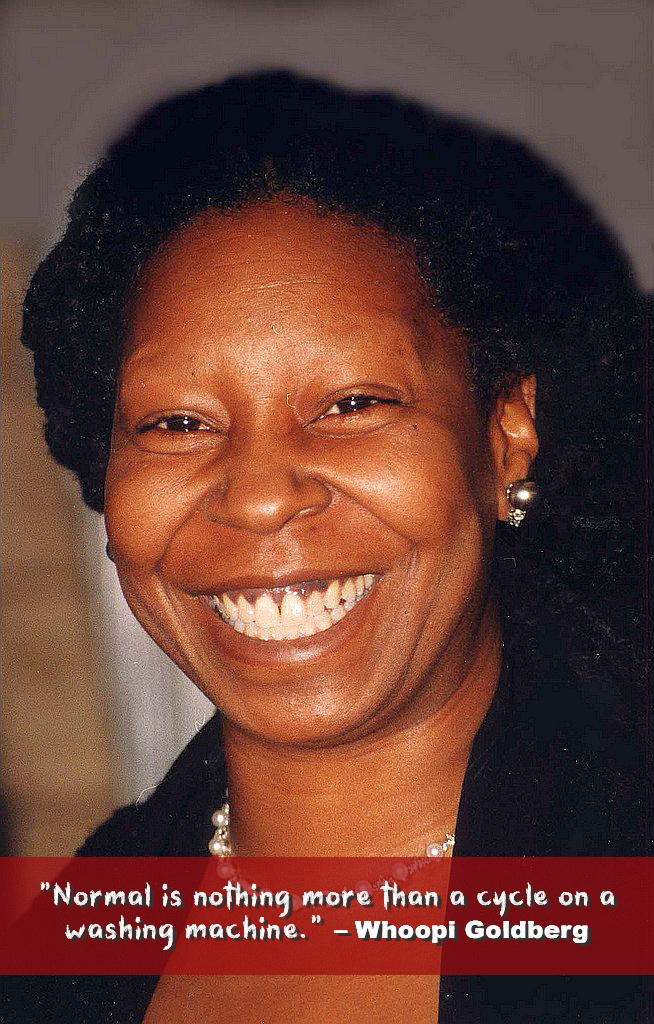
She was born on November 13, 1955 in Chelsea, New York and grew up in a housing project with her brother and mother, who was a nurse and later became a Head Start teacher.
In school, she was called “slow,” “dumb,” “lazy,” or “retarded.” She wasn’t diagnosed with dyslexia until she was an adult, so when school kept getting harder and harder, she eventually dropped out at 17. With her self-esteem low, she traveled a turbulent road in life, which included poverty, drug addiction, single motherhood, welfare, and a series of wide ranging jobs.
In his interview for the Child Mind Institute, the founder, Dr. Harold Koplewicz, called her a woman of grit and resilience.
Today, we know her as Whoopi Goldberg, actress, comedian, radio host, television personality, author and UNICEF International Goodwill Ambassador. Listen to her recall some of her challenges and her mom’s support in her interview with Quinn Bradlee:
She counsels parents to be supportive of their dyslexic children – “Stop trying to find a reason why it happened… It’s not your fault… Pay attention to how your child is doing stuff.”
Then, listen to her speak at the Goodwin College 2018 Commencement where she counsels the graduates, after receiving an honorary Doctorate of Humane Letters.
How can you build your child’s self-esteem at home to combat the negative labels in school?
When you consider the vast advancements that have been made in science and technology, and the multiple methods for accessing information, it is fair to say that schools and institutes of learning insist on using, as Dean Bragonier puts it, “the most archaic form of educational media.”

If dyslexia is considered a different way of thinking rather than a disadvantage; if the different patterns of strengths and challenges are kept in mind; if as much importance is placed on those strengths as their difficulties; then early intervention and continued support would be made a priority.
Imagine a world where the thinking skills that dyslexics excel at are used to prepare them to contribute to their communities and the world. What would be the possibilities?
You may be wondering what those skills are. Here are they:
After many years of struggle, usually, with very little significant support, many dyslexics gravitate to career paths that cater to their preferred way of thinking.
In my previous article, I cited some data from Dr. Gershen Kaufman. Here’s some more:
In his autobiography, Nicholas Negroponte, founder of the MIT Media Lab and the One Laptop per Child Association, called dyslexia the MIT disease because of how common it is among students on the campus of the Massachusetts Institute of Technology (MIT).
If you’re not already familiar with the world of dyslexia, it’s time to educate yourself about it and encourage every teacher and educator to do the same. After all, if one in five children are dyslexic, there is at least one child in every class who can be identified with dyslexia.
What are you willing to do to support the movement to reshape the teaching industry in the area of dyslexia?
Knowledge…learning…education, fueled by literacy, are keys to success.

Traditionally, literacy is defined as the ability to read and write.
A more complete definition, however, encompasses listening, speaking, reading and writing and today, using electronic media.
The major goal of every educator and parent should be to instill in children a solid foundation of transferable skills and a life-long love of reading and learning. To stay relevant, our children must constantly update their knowledge base. Hence, the prioritizing of literacy.
Dr.Carol Flexer, professor of audiology at the University of Akron, explains the importance of literacy this way,
“Literacy is inextricably entwined with sound. Immature listening abilities and underdeveloped auditory feedback loops have a substantial impact on how children learn to read.”
Literacy is all about sound. All its components incorporate sound in some way. Children learn to speak from listening. They learn to read from speaking and to write from reading.
Although our ears are the conduits for sound, we hear with our brains. Human development studies tell us that the human auditory brain structure does not fully mature until around age 15.
When brains do not receive intact sound, it is usually due to any one or a combination of factors, which include a noisy environment, ear infection, lack of auditory experience or immature brain development. Dyslexics have trouble connecting the sounds that make up words with the letters that represent those sounds. For them, the problem is often immature brain development.
Brain development studies show that sensory stimulation can influence growth and organization of auditory brain pathways.
That is why a number of currently available programs are helping dyslexic children develop their language and literacy skills. They are able to stimulate the auditory centers of the brain with precise sound. Music listening therapy helped my daughter tremendously.
This is good news for the dyslexic community.
Does this mean that every dyslexic person who receives this type of stimulation will learn to read at the same level as his non-dyslexic peers?
No.
Just as there is a continuum in the severity of characteristics in dyslexics, there is variety in their response to various sound development programs.
As technology takes over more and more, the skills that dyslexics find challenging are on the decline, while the thinking skills needed in today’s workplace are an integral component of their strengths.
Does interpretation of sound still matter? Yes.
But let us keep things in perspective. The goal is to learn concepts and generate ideas that will serve humanity and improve society.
There’s eye-reading – print books; ear-reading – audiobooks; and finger reading – braille. Whichever method one uses to accomplish this goal, is what’s best for him.
Which method of reading do you and your children prefer?
“I was dyslexic, I had no understanding of schoolwork whatsoever. I certainly would have failed IQ tests.” ~ Richard Branson
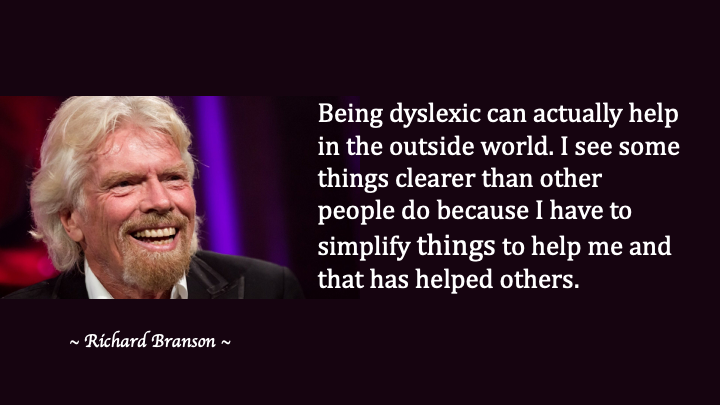
Sir Richard Charles Nicholas Branson was born on July 18, 1950, at Blackheath, London. His father was a barrister and his mother a flight attendant. His academic performance was poor. He was always interested in becoming an entrepreneur, so he dropped out of school at age 15, to start his first business…a magazine named Student. Listen to this interview in which he credits dyslexia with helping him.
He founded the Virgin Group in the 1970s. In 1984, he started Virgin Atlantic Airlines. In 2004, he founded spaceflight corporation Virgin Galactic, based at Mojave Air and Space Port, for the SpaceShipTwo suborbital spaceplane designed for space tourism. Today, his group controls more than 400 companies in various fields.
Having faced a lifetime of failures, Branson noted, “I suppose the secret to bouncing back is not only to be unafraid of failures but to use them as motivational and learning tools.”
Branson learned he was dyslexic as an adult. In one of his many interviews, he counseled, “Never give up… Fight, fight, fight to survive.”
Talking about dreams, he says, “If your dreams don’t scare you, they are too small.”
Do you have a dream that scares you?
Have you asked your children (dyslexic and non-dyslexic) about their dream lately?